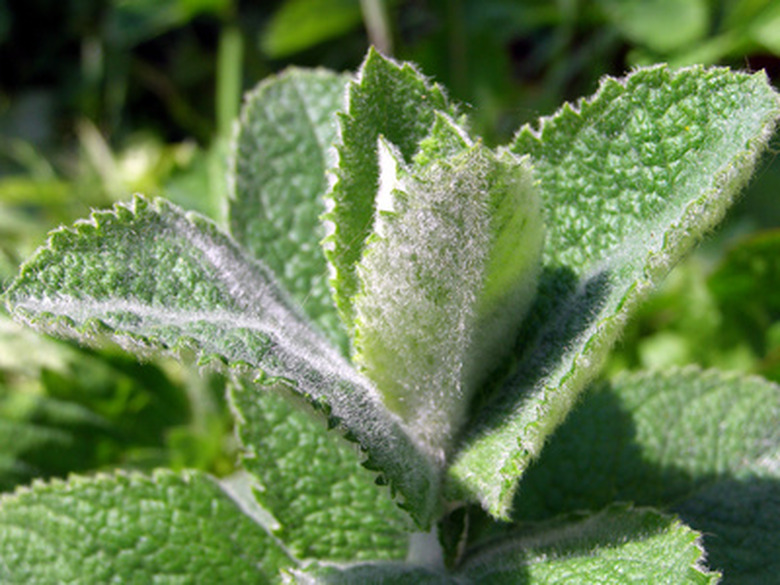How To Care For Mint Plants
Plants in the mint family grow rapidly and produce aromatic leaves often harvested for culinary use. Hardy to -20 degrees F, mint plants grow throughout the United States and may become invasive if not properly controlled. Gardeners value these fragrant perennial herbs not only for their use as flavoring and garnish, but also for their attractive form in the garden. Most varieties of mint produce small blossoms, but allowing the plants to flower reduces the flavor and intensity of the leaves. Although grown primarily outdoors, mint planted in containers is less likely to invade other areas of the garden.
Step 1
Choose a planting site for mint that receives six to eight hours of direct sunlight each day. Spread a 4-inch layer of aged manure over the planting site and use a garden tiller to work it into the soil to increase drainage and fertility to adequate levels.
- Plants in the mint family grow rapidly and produce aromatic leaves often harvested for culinary use.
- Hardy to -20 degrees F, mint plants grow throughout the United States and may become invasive if not properly controlled.
Step 2
Plant mint in a container filled with prepared soil from the planting site. Plant the entire container in the ground to confine the root system and eliminate the plant's invasive growth habit. Plant so the container's rim is at least 1 inch below the surface of the soil.
Step 3
Irrigate mint plants once per week, soaking the soil to a depth of 1 to 2 inches at each application. Decrease the frequency of watering to once every 10 days during winter when active growth has ceased.
Step 4
Fertilize once per year during early spring before active growth resumes. Use a slow-release 16-16-16 NPK fertilizer at a rate of 1 tsp. per plant. Read the instructions provided by the manufacturer for the correct application procedure.
- Plant mint in a container filled with prepared soil from the planting site.
Step 5
Harvest fresh mint leaves during the active growing season for optimal flavor. Pinch off as many leaves as desired, but do not remove more than 50 percent of the plant's foliage during any given week or the plant will have trouble recovering.
Step 6
Use pruning shears to cut back mint plants twice per year, once in late spring and again in mid-summer. Reduce the height of the plant to about 6 inches to encourage a more healthy, compact growth habit. Harvest any desired foliage prior to cutting back the plant.
Tip
Store mint leaves by hanging them upside down in bundles to dry. Plant mint directly in the ground without planting in a container first only if you aren't concerned about the plant's rapid spreading.
Things Needed
- Aged manure
- Garden tiller
- Container
- Fertilizer
- Pruning shears
References
- Utah State University Cooperative Extension: Mint in the Garden
- "Alabama and Mississippi Gardener's Guide"; Felder Rushing, Jennifer Greer; 2005
